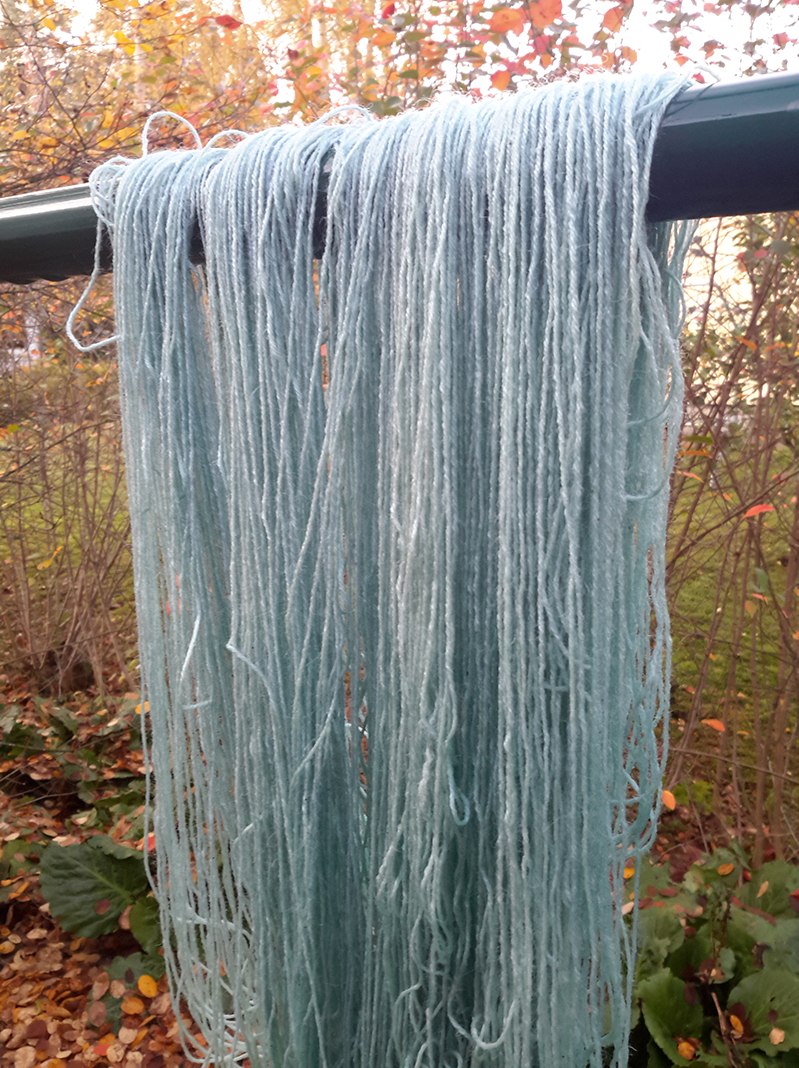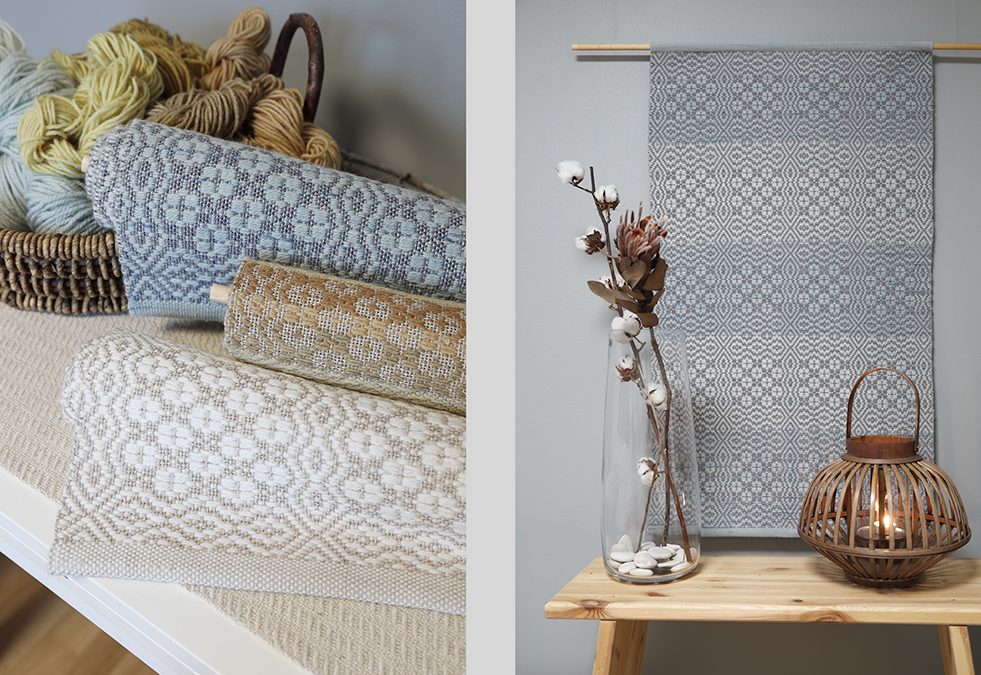| The warp | Line linen (long fiber) Nel 16/4, unbleached, tex 104×4 |
| Warp | width 63,7 cm the sett 4 threads/cm number of warp ends 255 + 2 additional ends |
| Length | 4,35 m |
| Reed | 40/1 (1 end per dent in a 40-dent reed) |
| Structure | Overshot |
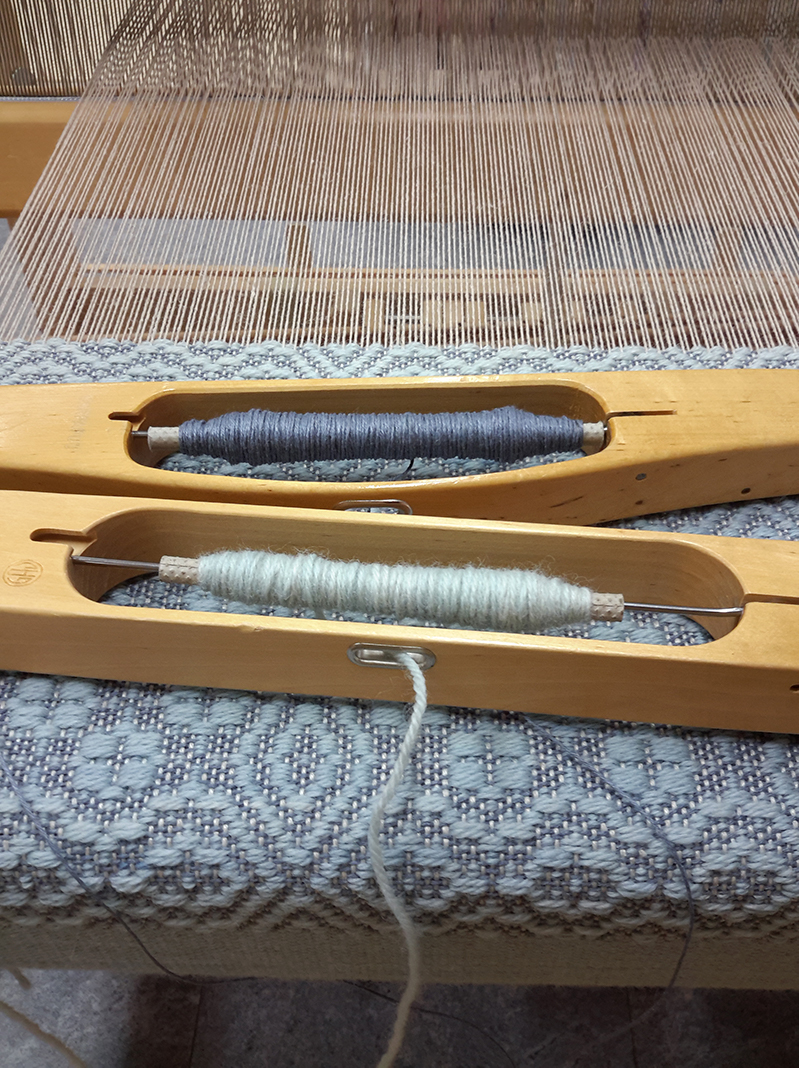
Woad – Bluish-grey tapestry
Finished size 60 x 106 cm
Weaving instructions
Weave 6 cm plain weave for the hem with a turquoise-blue wool yarn at the beginning and the end of the fabric. Weave the tapestry according to the treadling instructions using grey linen yarn as a tabby weft and single wool yarn as a pattern weft. Weave the treadling repeat with blue or light blue wool in turns. Woven length is 103 cm + hems.
The sett is 6 tabby picks and 6 pattern picks per cm.
AMOUNT OF YARN NEEDED FOR THE WEFT
Line linen Nel 16/4, 1 kg = 2 400 m, Lappajärven Värjäämö,
19 bluish grey 167 g.
Esito Worsted wool blanket yarn, tex 143×3, (1 kg = 2 300 m)
off-white dyed with woad, blue 166 g and light blue 76 g.
FINISHING
Finish by sewing 3-step zigzag stitches on the ends. Stitch the hems by hand with a linen thread or other strong yarn.
The inner hem allowance is approx. 1 cm and the height of the finished hem is 2,5 cm.
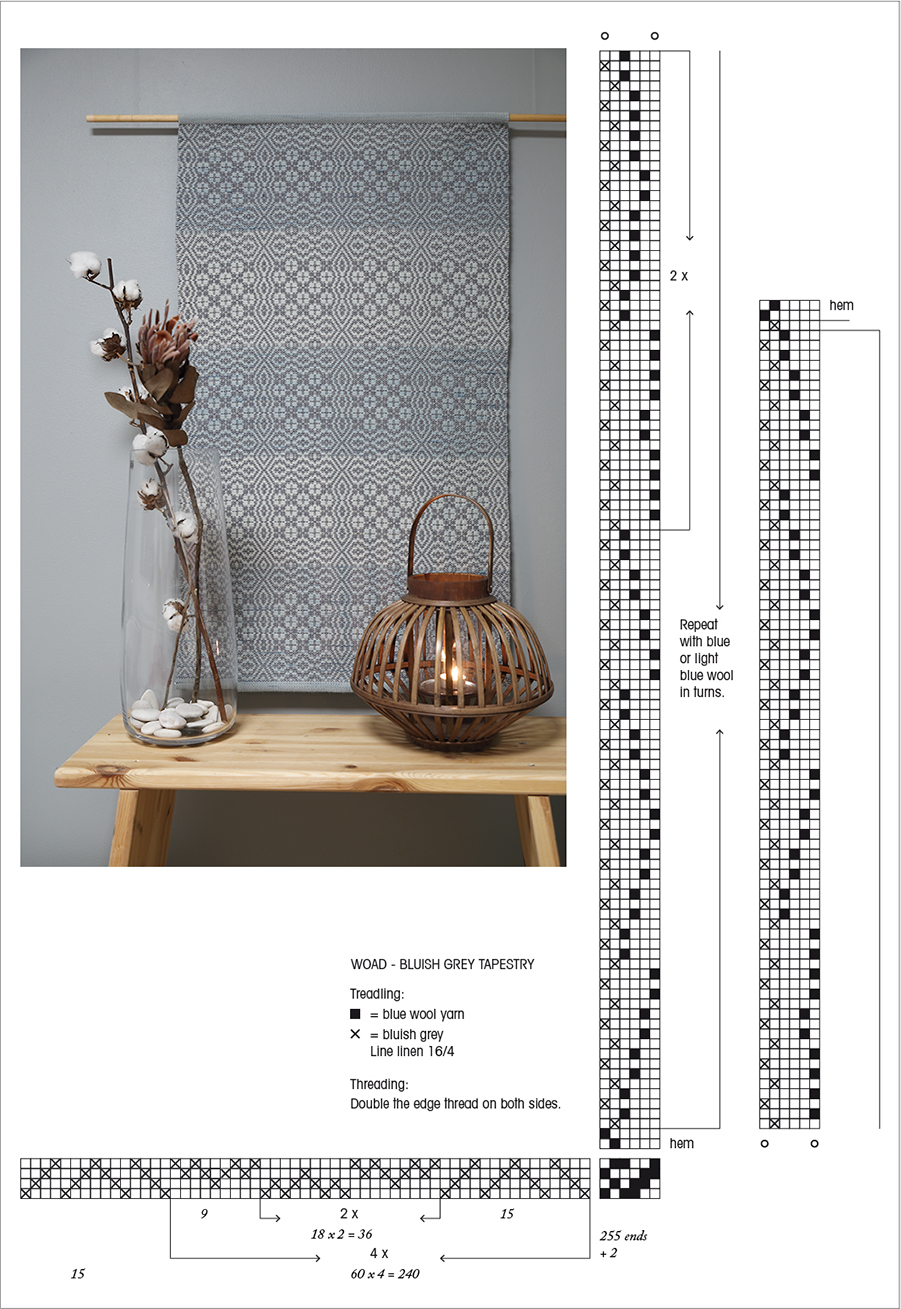
Button – White tapestry
Finished size 59 x 94 cm
WEAVING INSTRUCTIONS
Weave 6 cm plain weave for the hem with a wool yarn at the beginning and the end of the fabric. Weave the tapestry according to the treadling instructions using the warp yarn as a tabby weft and double wool yarn as a pattern weft.
Woven length is 92 cm + hems. The sett is 4 tabby picks and 4 (doubled) pattern picks per cm.
AMOUNT OF YARN NEEDED FOR THE WEFT
Line linen Nel 16/4,
tex 104×4, 1 kg = 2 400 m,
Lappajärven Värjäämö,
unbleached 97 g.
Esito Worsted wool blanket yarn, tex 143×3, (1 kg = 2 300 m),
7001 white 220 g.
FINISHING
Finish the same way as the Woad tapestry.
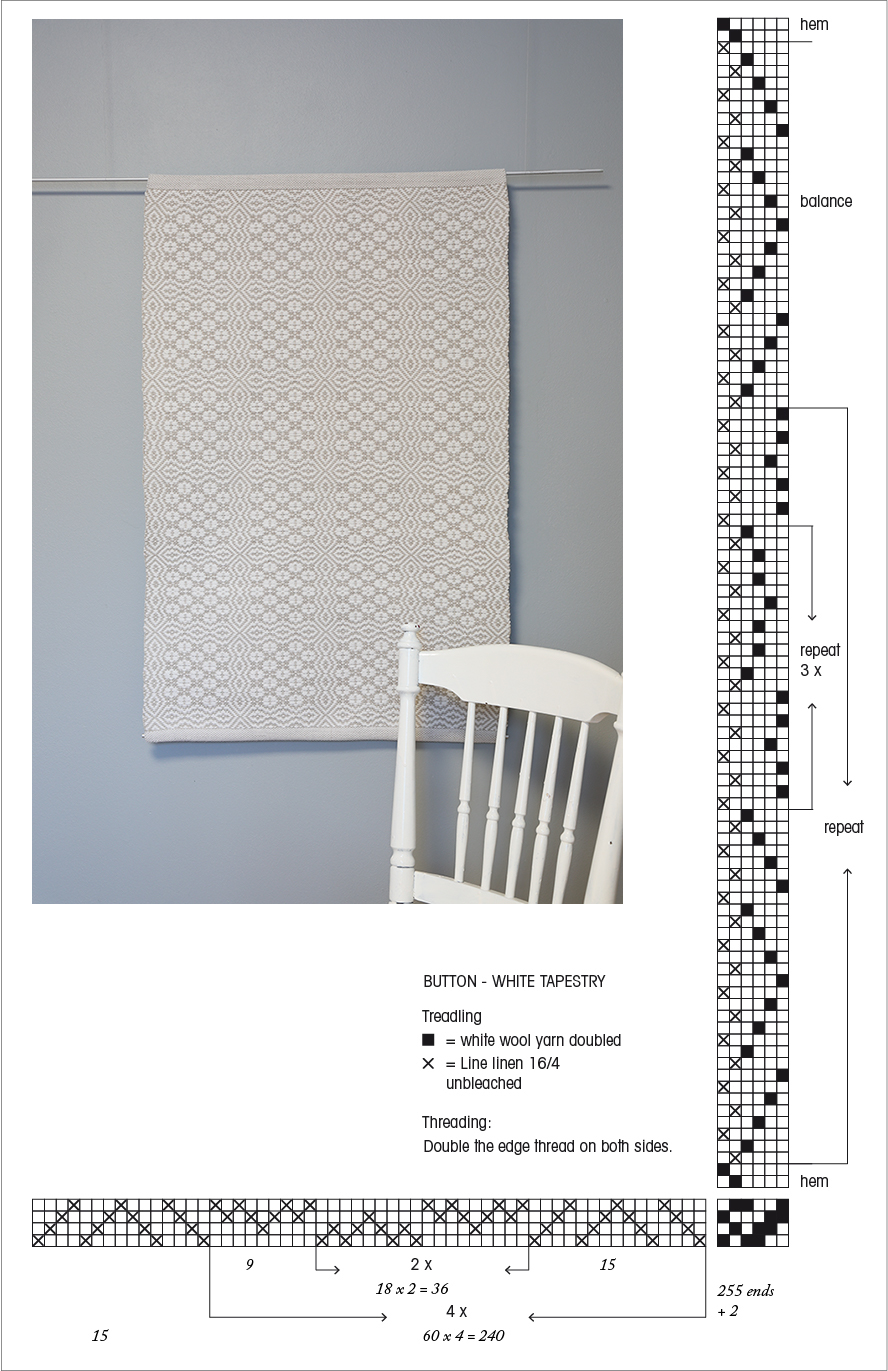

Striped Tapestry
From plant-dyed yarns
Finished size 60 x 74 cm
WEAVING INSTRUCTIONS
Weave 6 cm plain weave for the hem with a wool yarn at the beginning and the end of the fabric. Weave the tapestry according to the treadling instructions using the warp yarn as a tabby weft and wool yarn as a pattern weft. See the weft colour order in the treadling instructions.
Woven length is 76 cm + hems. The sett is 9 tabby picks and 9 pattern picks per 2 cm.
AMOUNT OF YARN NEEDED FOR THE WEFT
Line linen Nel 16/4,
tex 104×4, 1 kg = 2 400 m,
Lappajärven Värjäämö, unbleached 91 g.
Plant-dyed wool yarns, various weights, 1 kg = n. 1 800 – 2300 m,
different colours, total 151 g.
FINISHING
Finish by sewing 3-step zigzag stitches on the ends. Stitch the hems by hand with a linen thread or other strong yarn. The lower side of the fabric has been used as the right side. Fold and stitch the hem to the wrong side.
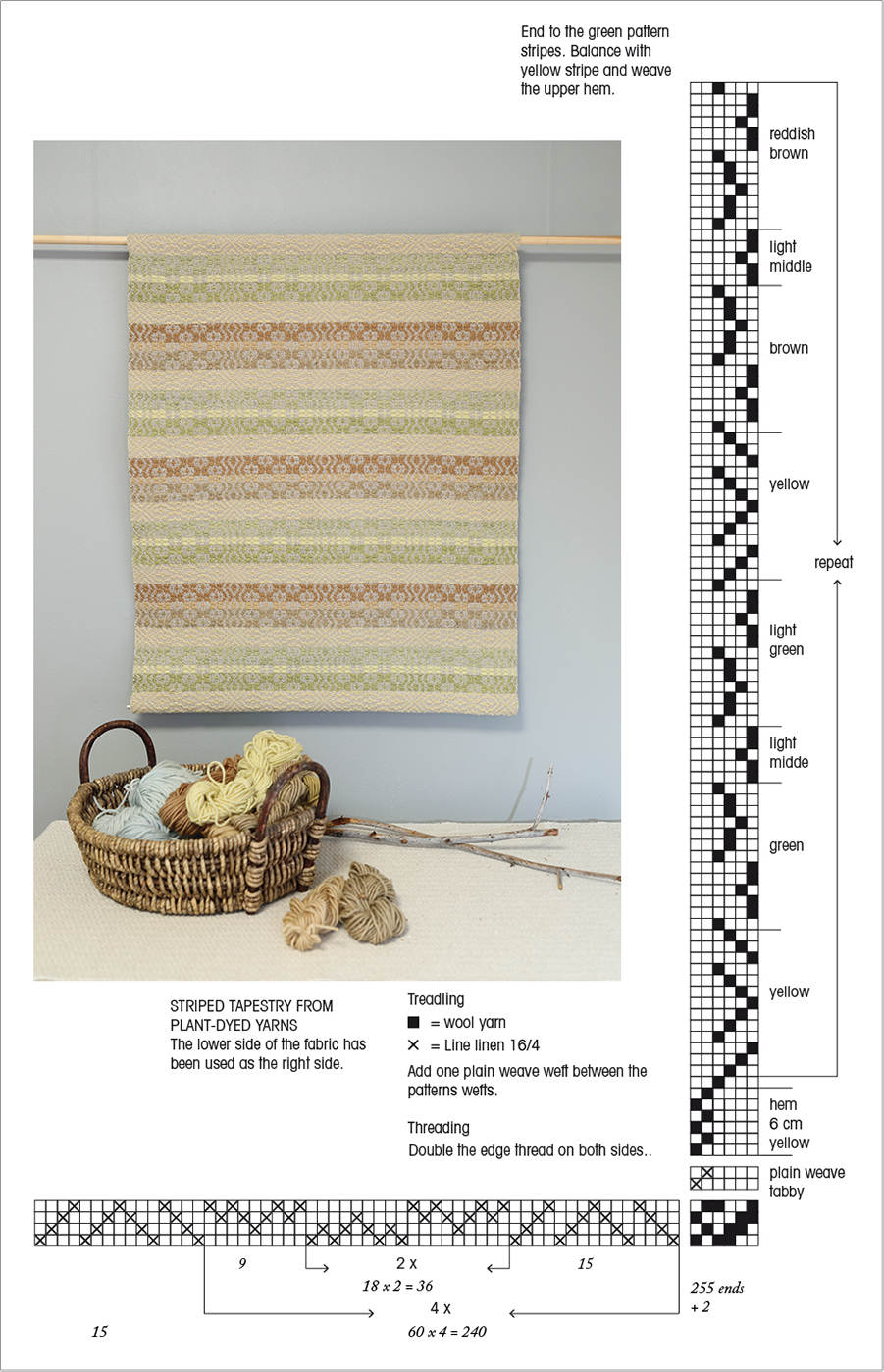
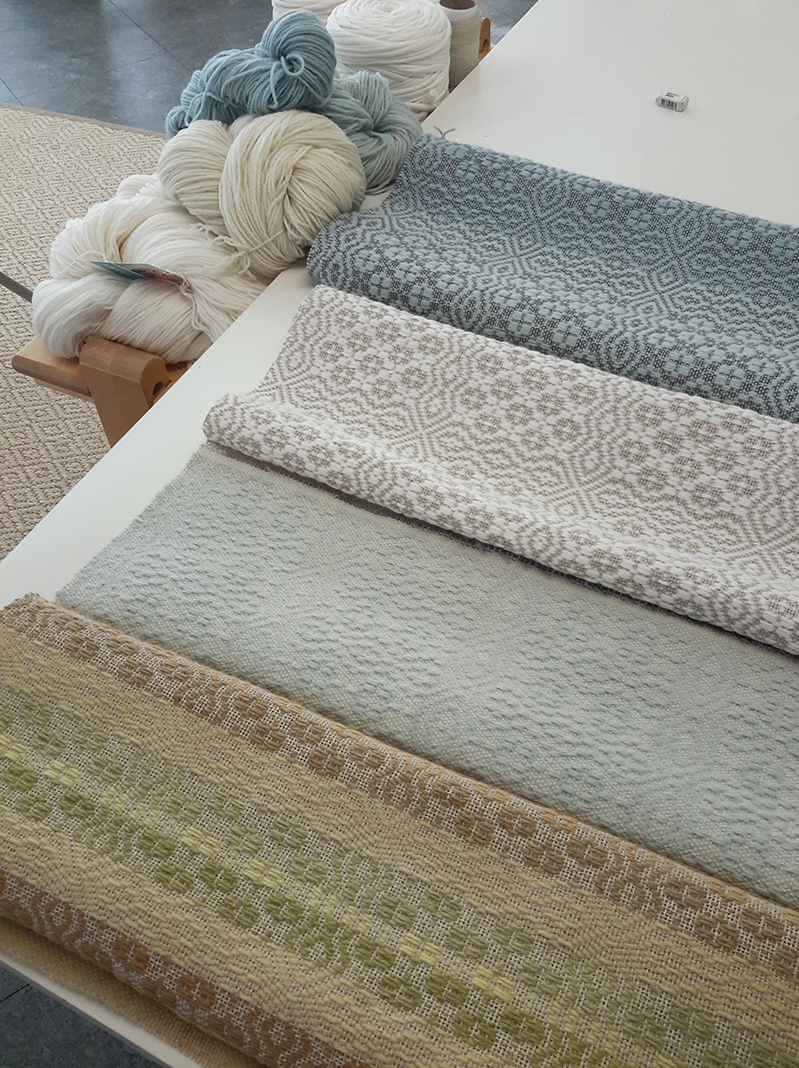
Tapestries on the table before finishing. The background weft is also wool in the light grey fabric. Dense fabric is suitable for example pillow cases.
The weft yarns in the blue tapestry have been dyed with woad
We had almost finished the weaving of the white tapestry when the cold days of autumn warmed up once more. We had still a chance to try out dyeing with woad and take out the dyeing pots! If we succeeded in the dyeing, we would get the weft yarns for a tapestry.
Woad (Isatis tinctoria) can be used to get blue dye the same way as indigo (Indigofera tinctoria). The dye is applied to the yarn with a vat dyeing process. Besides the ordinary equipment for stovetop dyeing, you need sodium carbonate and sodium dithionite (=sodium hydrosulfite). Sodium dithionite is a strong chemical, therefore you need a respirator face mask, eye protectors and gloves. Carry out the dyeing outside or in a well-ventilated space.
You need approximately: 100g yarn – 400-800 g fresh/dried(?) leaves – 5 litres of dye bath – 50 g sodium dithionite. In this dye bath we used additionally woad powder because we didn’t have enough leaves ( 280 g leaves + 5 g of powder – 7 litres of dye bath – 60 g sodium dithionite – 300 g yarn).
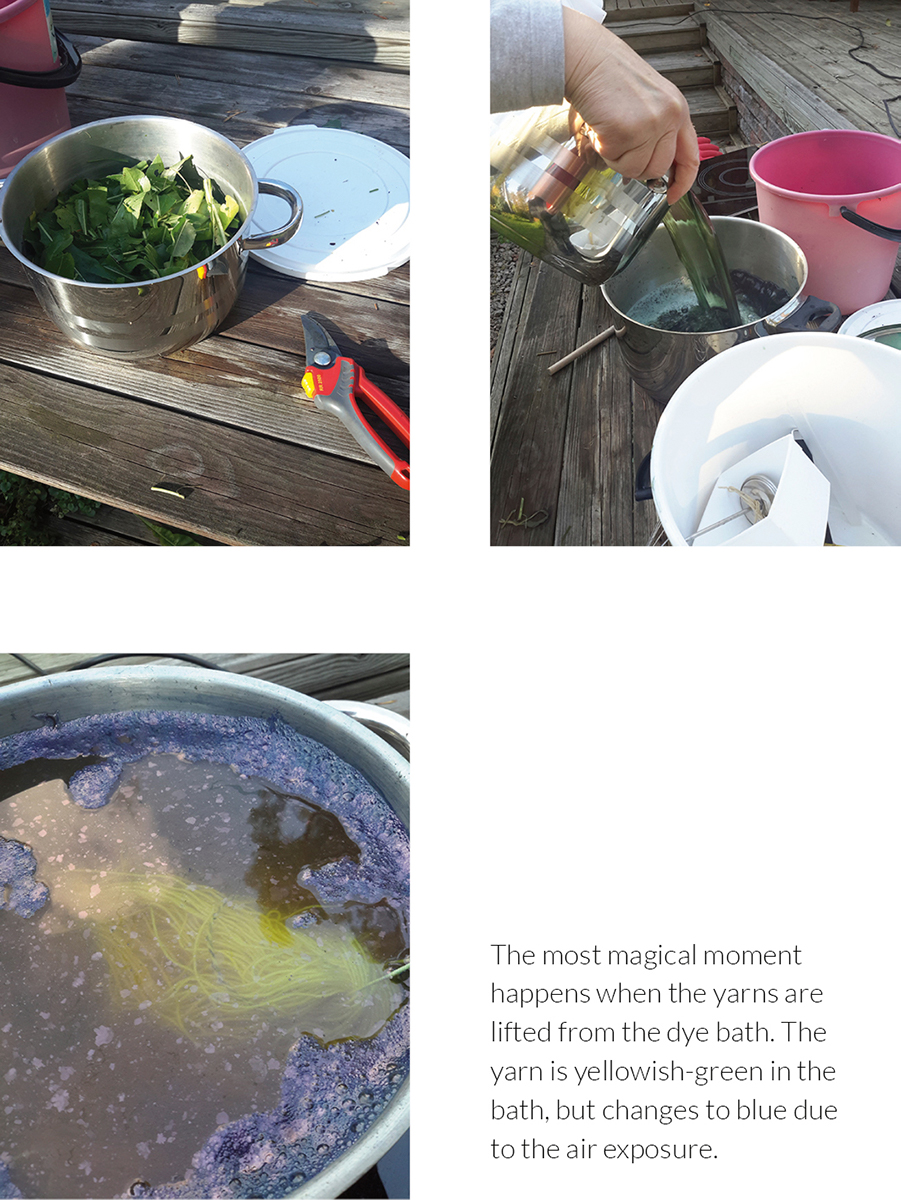
This is how we dyed the yarns:
1. Shred the woad leaves in a pot. Pour boiling water over the leaves and fill the pot. Let it simmer under the lid for about 30 – 40 minutes. Keep the dye bath warm.
2. Strain the leaves from the liquid. The first year woad harvest has the most dye. Woad is a biennial plant. The first year it grows a rosette and the second year the flower and the seeds.
3. Add sodium carbonate to the bath to make it alkaline
(pH 9-10). Oxidize the bath by whipping it with a whisk or by pouring it back and forth between two pots for 5 – 10 minutes. The dye will change to dark green.
4. Heat the bath to 50oC and add carefully the sodium dithionite. Use personal protective equipment! Let it sit for 30 – 40 minutes. The colour of the bath turns yellowish-green.
5. Soak the warm and wet wool yarns to the bath and let them take up the colour for 10-15 minutes. The bath shouldn’t oxidize anymore, so stir the bath only as much as it is needed to ensure an even colour.
6. Remove the yarns from the dye bath. The colour of the yarns will change gradually from yellowish-green to blue. Let the yarns oxidize for 10 minutes. Rinse. You can add a little vinegar to the last rinse water.
– Explore books on dyeing before trying it. Follow the safety instructions.
